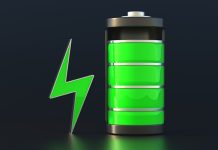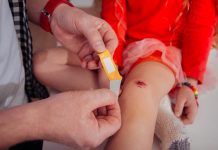
Lithium-ion batteries have been the go-to for energy storage, but lithium is limited and expensive.
As the demand for energy storage grows, researchers are looking for alternatives. Sodium-ion batteries (SIBs) are a promising solution because sodium is abundant and easy to find in seawater and salt deposits.
To improve SIBs, scientists have been working on materials for positive electrodes (cathodes), negative electrodes (anodes), and electrolytes.
A key part of a good battery is a thin, solid electrolyte interface (SEI), a layer that forms on the anode surface during the first charge/discharge cycles. This layer is crucial for battery performance as it prevents the anode from degrading.
Hard carbon (HC) is a promising material for anodes, but it forms an uneven, thick, and weak SEI, which lowers the battery’s efficiency.
To address this, binders like carboxymethyl cellulose salts, poly(acrylic acid) derivatives, and poly(vinylidene fluoride) (PVDF) have been used. However, these binders slow down the movement of sodium ions in the anode, resulting in poor performance.
To solve this problem, Professor Noriyoshi Matsumi and doctoral student Amarshi Patra from the Japan Advanced Institute of Science and Technology (JAIST) have developed a new binder called poly(fumaric acid) (PFA) for HC anodes.
Their research was published in the Journal of Materials Chemistry A.
Professor Matsumi explains, “PFA is different from traditional binders because it has carboxylic acid on all the carbon atoms of its main chain.
This unique structure improves the movement of sodium ions and makes the binder stick better to the electrode. PFA is also water-soluble, non-toxic, and made from bio-based materials.”
The researchers created PFA by hydrolyzing poly(fumarate ester)s. They then mixed HC, Super P carbon, and PFA in water to create a slurry, which they coated onto a copper foil to make an HC anode. This anode was used in a half-cell with a sodium metal disk as the counter electrode and 1.0 M NaClO4 as the electrolyte.
To test the binder’s effectiveness, they measured how well the electrode components stuck to the copper current collector. Strong adhesion is important for the long life of SIBs. The PFA binder showed a peeling force of 12.5 N, higher than the 11.5 N for poly(acrylic acid) binders and 9.8 N for PVDF binders.
The researchers tested the battery’s performance by charging and discharging it. The PFA binder showed specific capacities of 288 mAh/g at 30 mA/g and 254 mAh/g at 60 mA/g, better than other binders. It also maintained 85.4% of its capacity after 250 cycles, showing excellent long-term stability. The SEI formed by the PFA binder was thin and did not crack or peel, enhancing durability.
The Na ion diffusion coefficient for the PFA-HC electrode was 1.9 × 10^-13 cm^2/s, higher than that of other binders. These results suggest that PFA can significantly improve the performance of SIBs.
Professor Matsumi is optimistic about the future: “We can modify the PFA structure to further enhance performance. We hope to work with companies to bring this technology to market. As a water-soluble and non-toxic binder, PFA could also be used in other energy storage devices.”
This new binder could make sodium-ion batteries more efficient and affordable, contributing to a more energy-efficient and sustainable future.



